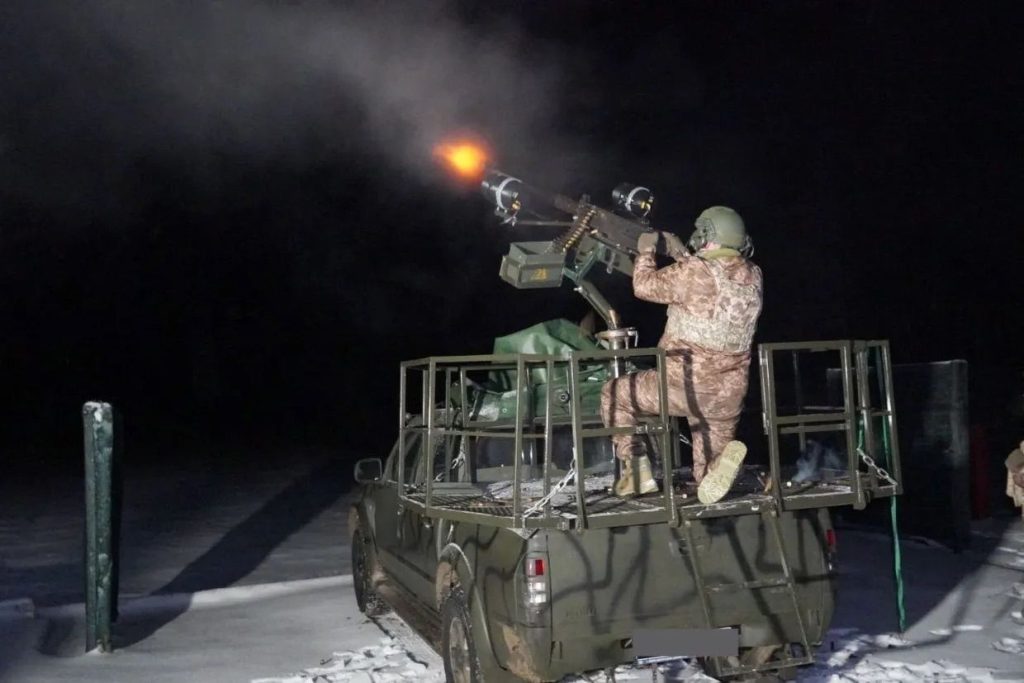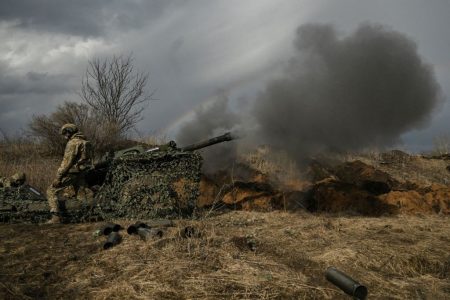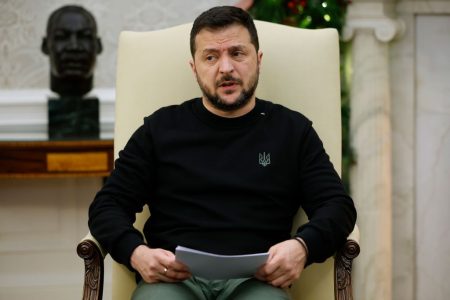Ukrainian air defenses successfully downed two missiles and three reconnaissance drones during a Russian attack overnight on April 20, according to Air Force commander Mykola Oleshchuk. Russia launched a total of ten missiles and drones targeting Odesa, Dnipropetrovsk, and Mykolaiv oblasts. Ukrainian forces managed to take down two Kh-59/Kh-69 guided cruise missiles, two Orlan-10 drones, and one Supercam drone. Additionally, Russian troops launched three Iskander-K cruise missiles and two S-300/400 missiles from locations in Belgorod Oblast and the Black Sea. The following morning, a missile strike on Odesa Oblast from occupied Crimea hit an infrastructure facility, but there were no reported casualties.
President Volodymyr Zelensky revealed that a previous missile strike on April 19 in Odesa Oblast resulted in one civilian injury and damage to port infrastructure. He mentioned that two food export terminals were impacted, including one owned by a Singaporean company. The stock of air defense ammunition in Ukraine is running low as the country awaits crucial U.S. military aid, the approval of which is set to be voted on. Amidst this, Russia has intensified targeted attacks on Ukraine’s energy infrastructure, overpowering local air defenses and causing destruction to significant thermal power plants. The situation remains critical as Ukrainian forces strive to defend against these relentless attacks.
Drone combat has become a key weapon in Russia’s war against Ukraine, presenting a new dimension to modern warfare. Unmanned aerial vehicles (UAVs) are being utilized on a large scale, catching both the Ukrainian and Russian armies off guard. Both military forces have made advancements in drone technology, contributing to the evolving nature of warfare in the region. The use of drones by Russia has added complexity to the conflict, posing challenges for Ukrainian defenses and strategic planning. This shift in tactics highlights the need for continued adaptation and innovation in response to emerging threats.
Governor Oleh Kiper reported a missile attack on Odesa Oblast from occupied Crimea, resulting in damage to an infrastructure facility without any casualties. Another strike on the same region on April 19 caused injuries to a civilian and extensive damage to port infrastructure, including food export terminals. The escalating attacks have put a strain on Ukraine’s air defense capabilities, particularly as ammunition supplies dwindle. The urgency for international support, including critical military aid from the United States, is crucial as the country faces ongoing threats and challenges from Russian forces.
The recent missile and drone attacks by Russia on Ukrainian territories underscore the heightened tensions in the region and the urgent need for assistance to bolster Ukraine’s defense capabilities. The targeting of key infrastructure facilities and energy plants poses a significant threat to the country’s stability and security. President Zelensky’s appeals for support and the upcoming vote on U.S. military aid highlight the critical juncture at which Ukraine finds itself. The resilience and determination of Ukrainian forces in the face of relentless attacks from Russia showcase the importance of international solidarity in defending against aggression and preserving peace in the region.
As air defenses in Ukraine continue to confront missile and drone threats from Russian forces, the importance of bolstering defense capabilities and securing critical military aid becomes paramount. The strategic significance of drones in modern warfare and their impact on the conflict between Russia and Ukraine emphasize the need for innovative defense strategies. With ongoing attacks targeting infrastructure and energy facilities, the resilience and adaptability of Ukrainian forces are being put to the test. The support of independent journalism and international solidarity in the fight against aggression are vital in shaping the outcome of the conflict and safeguarding the sovereignty of Ukraine.















